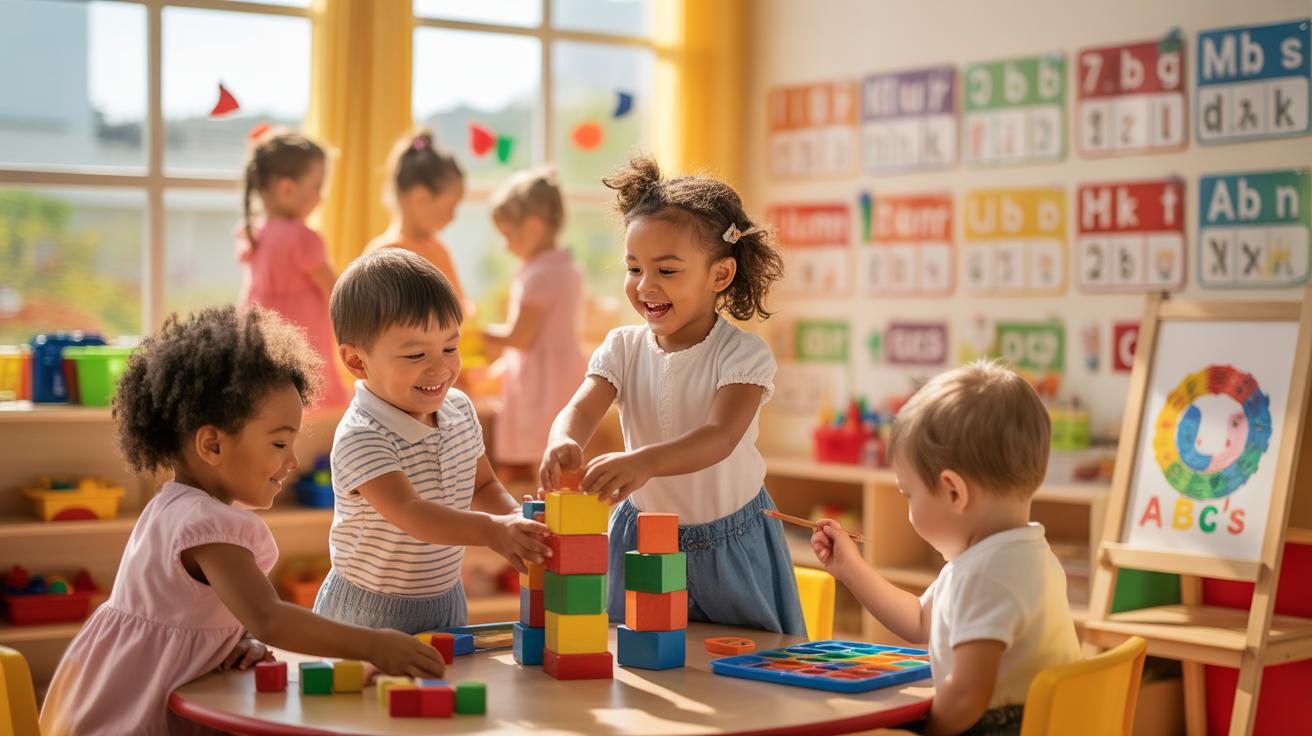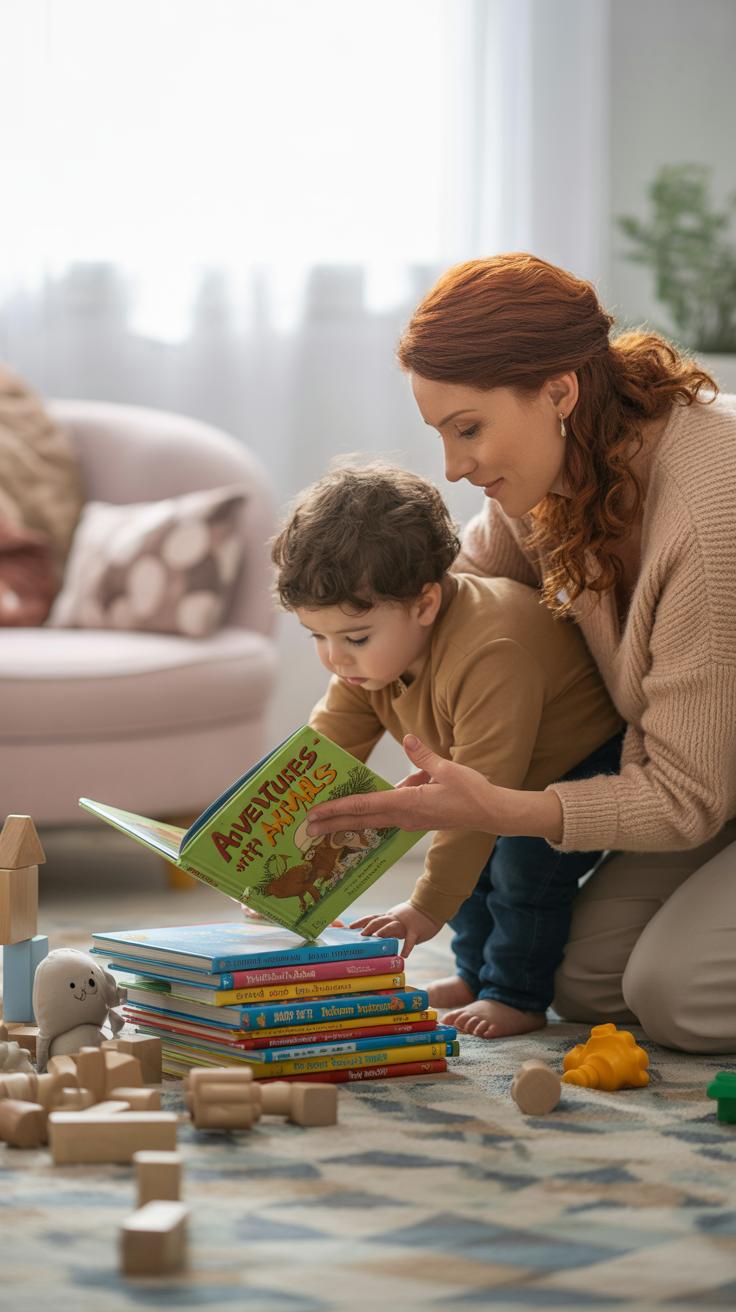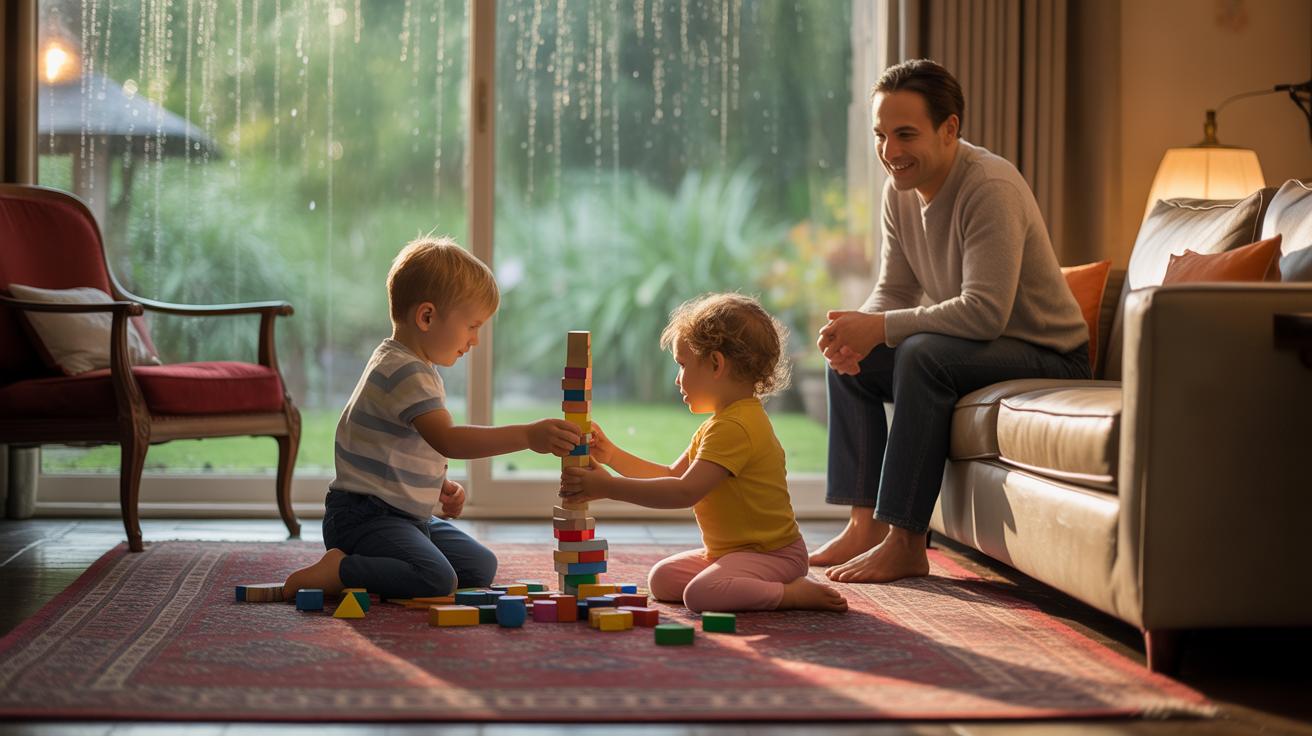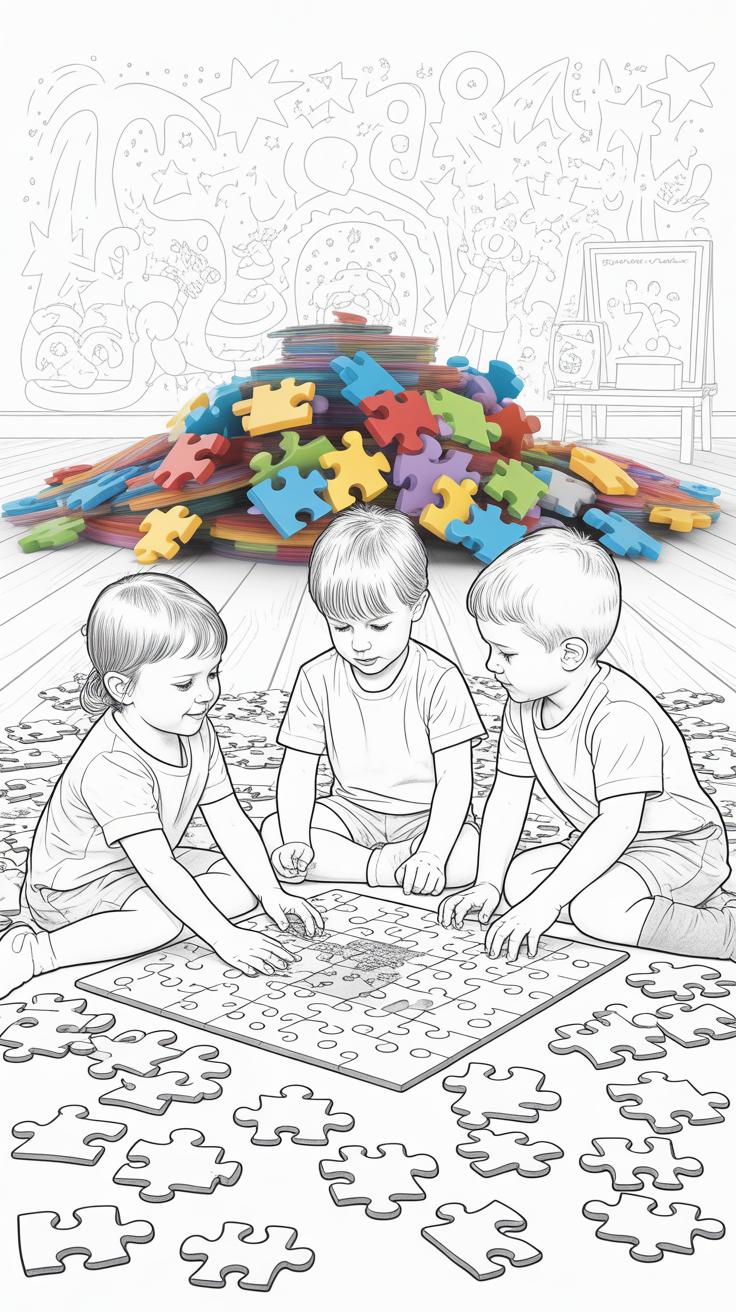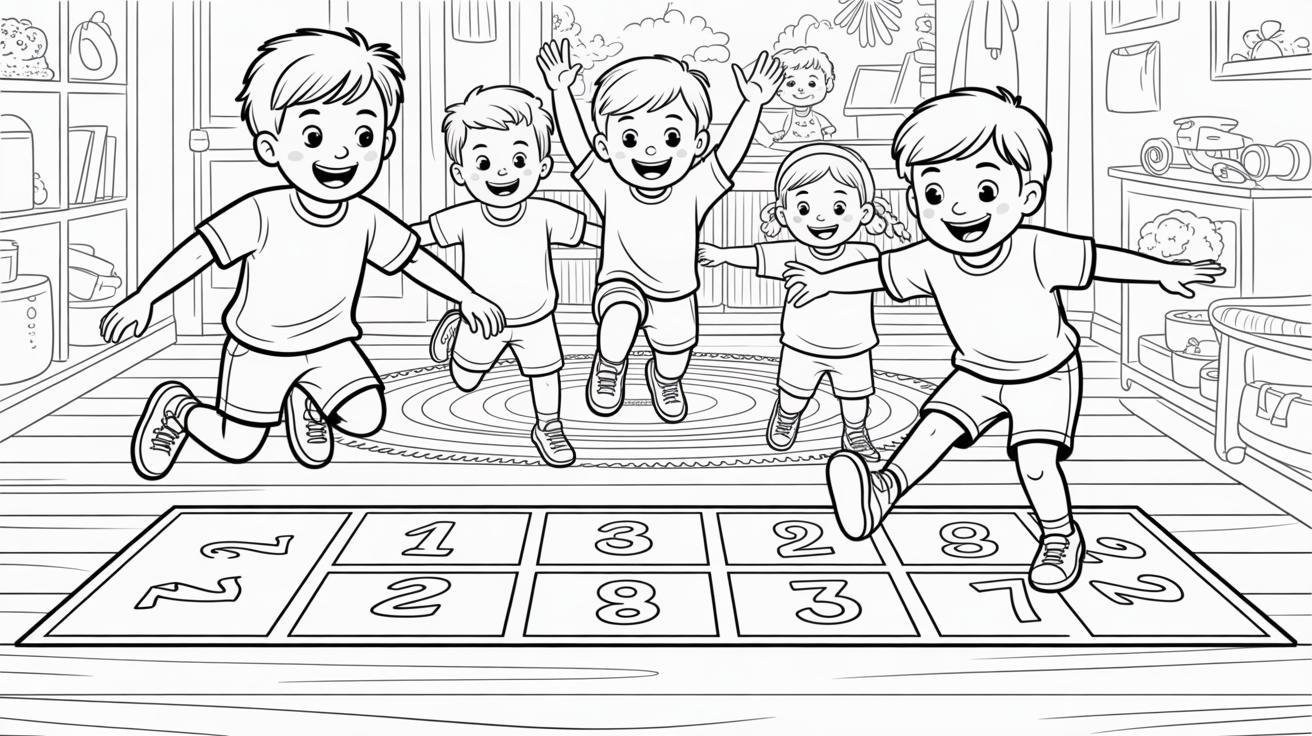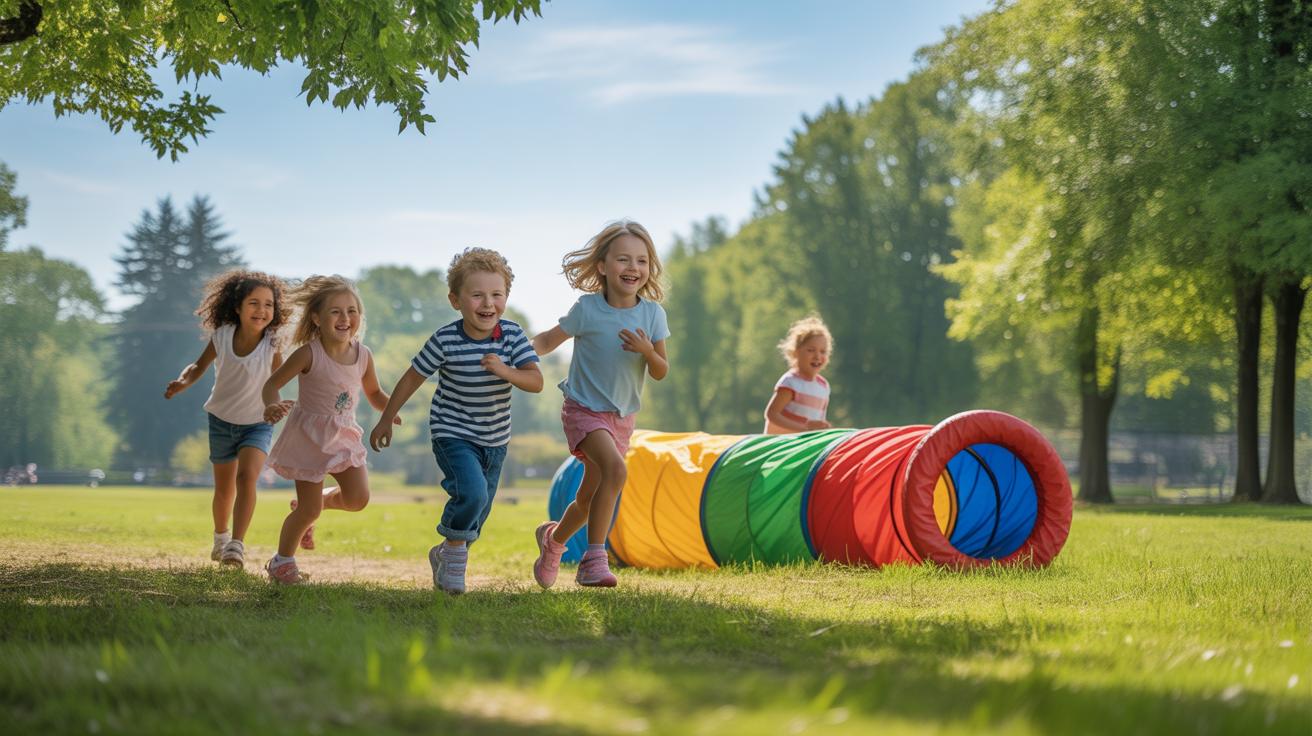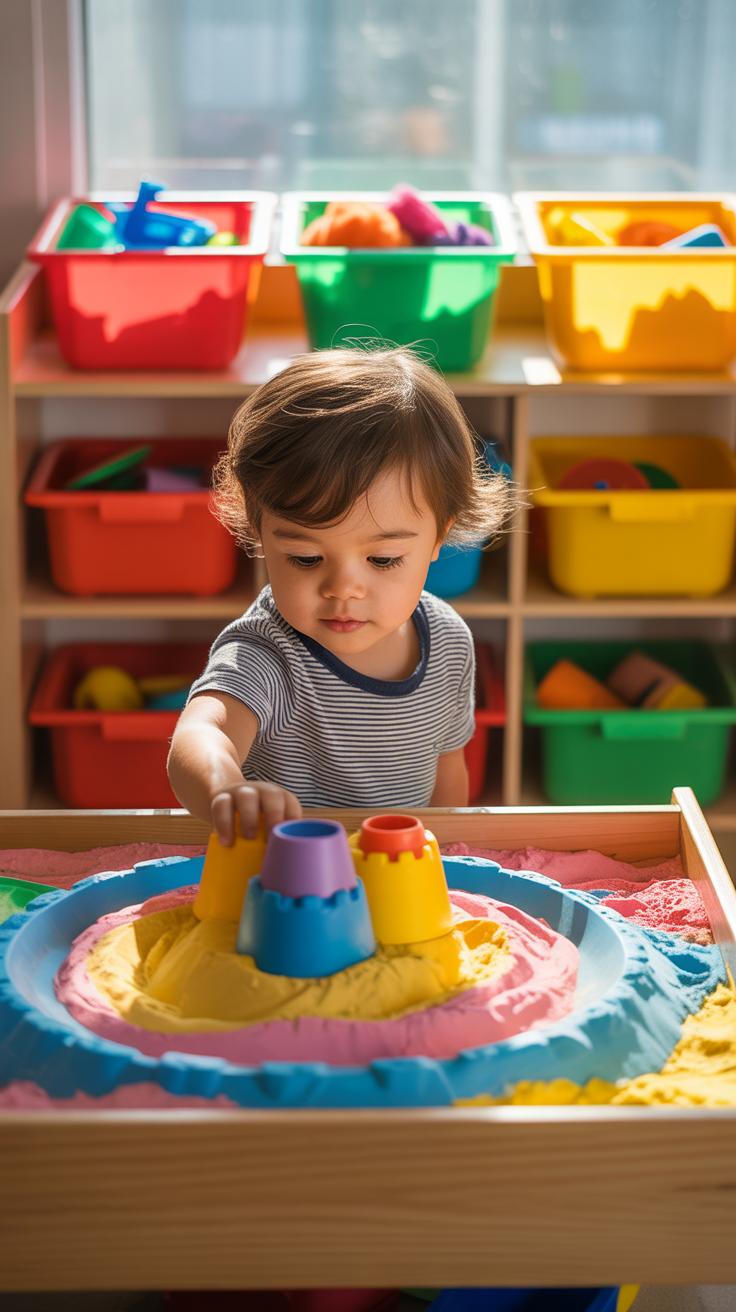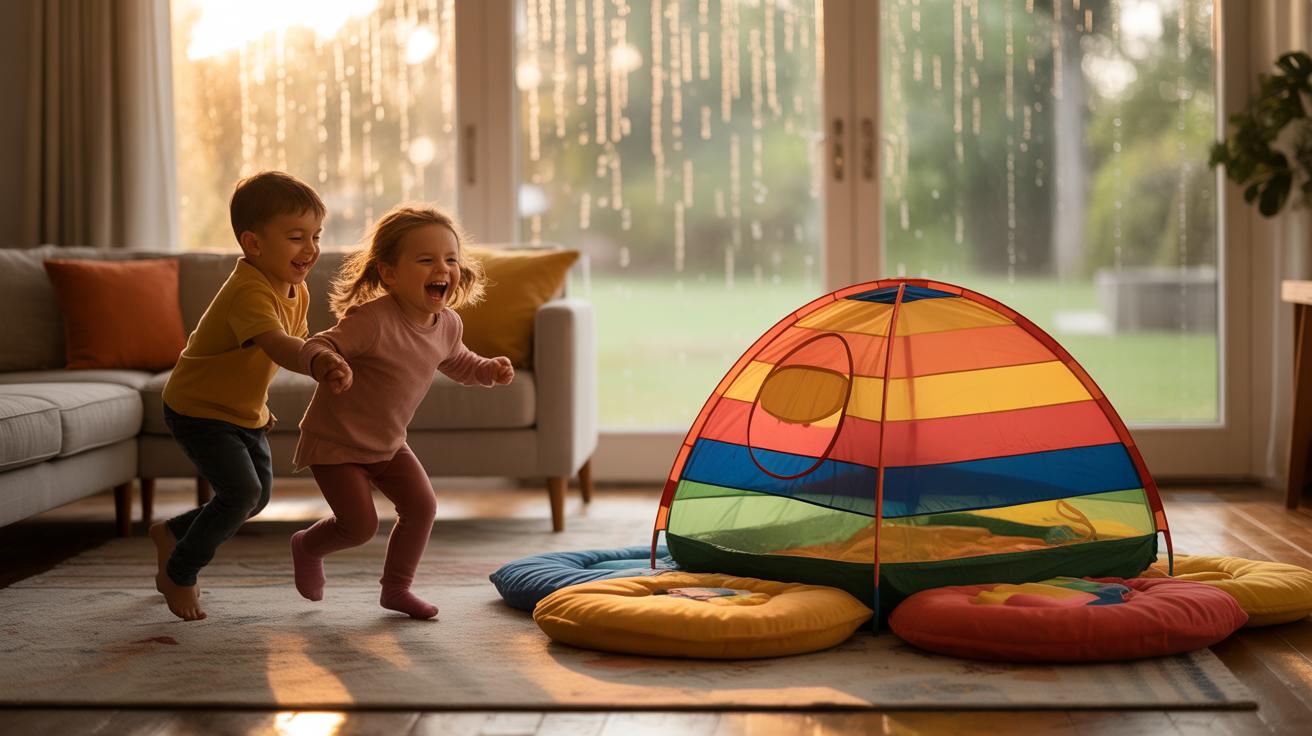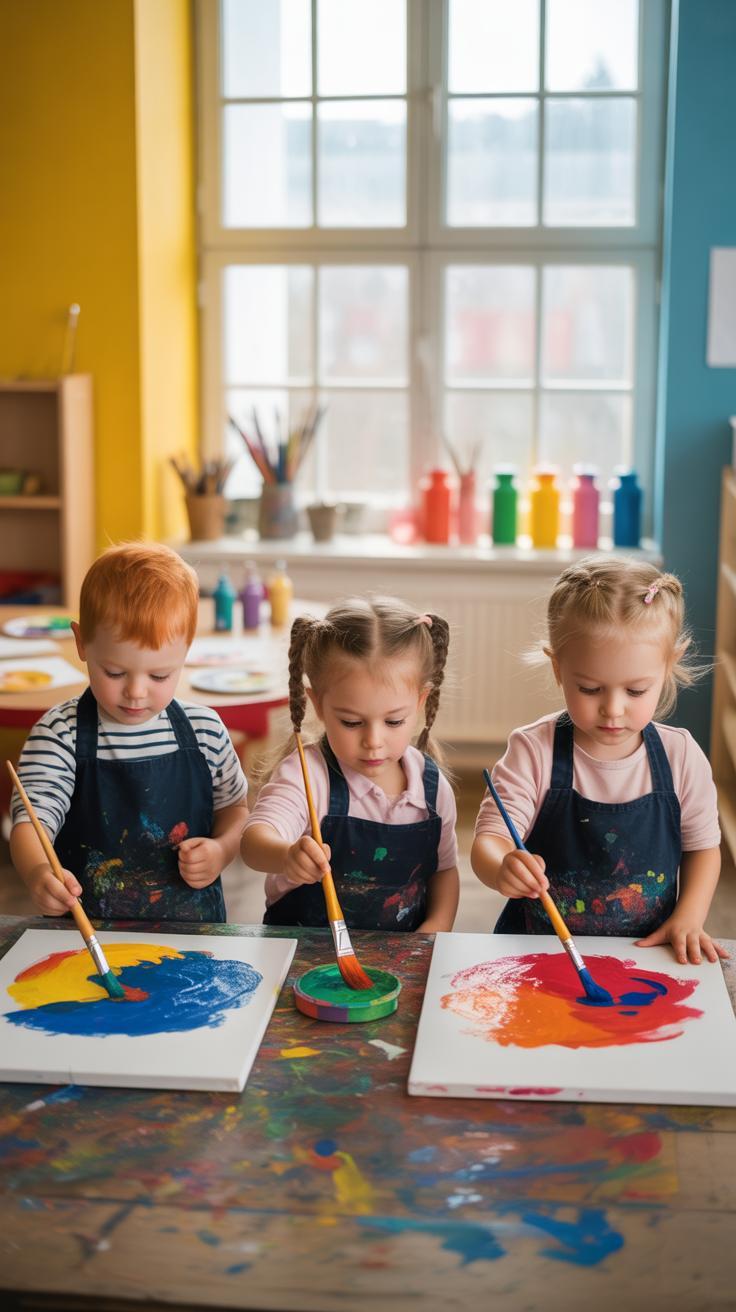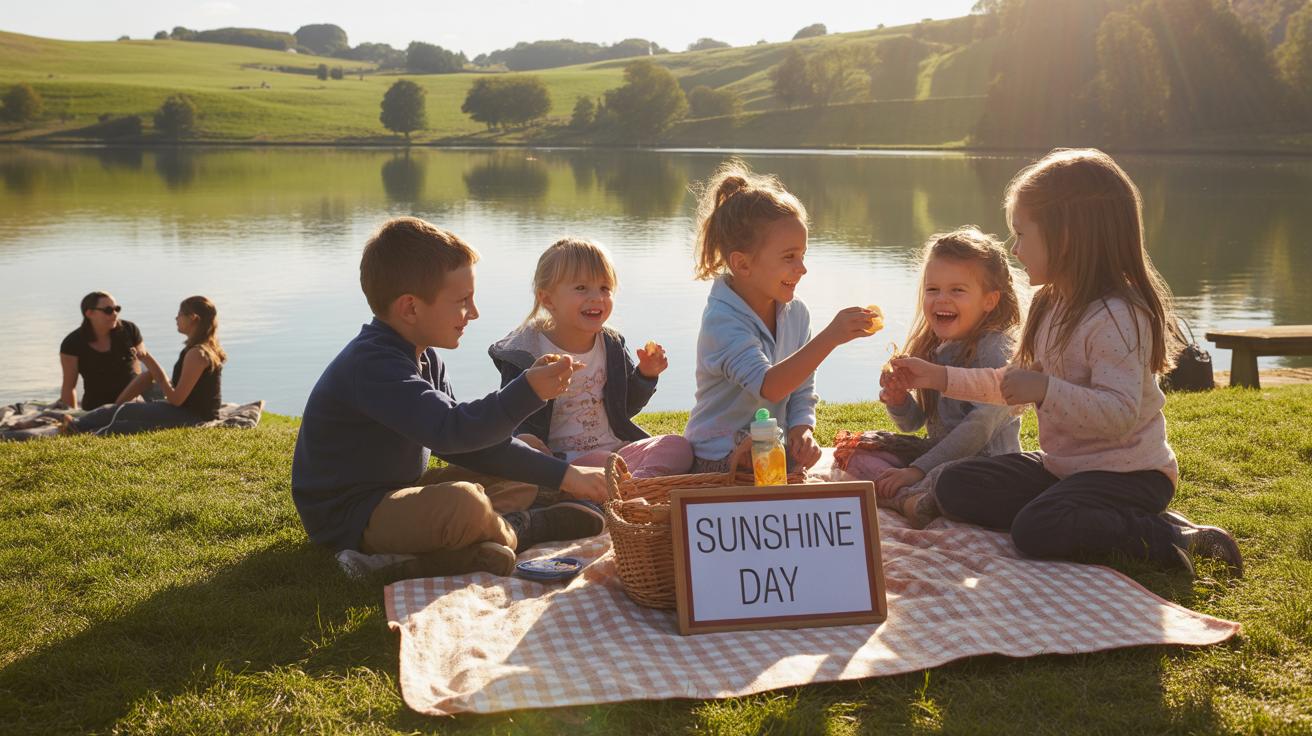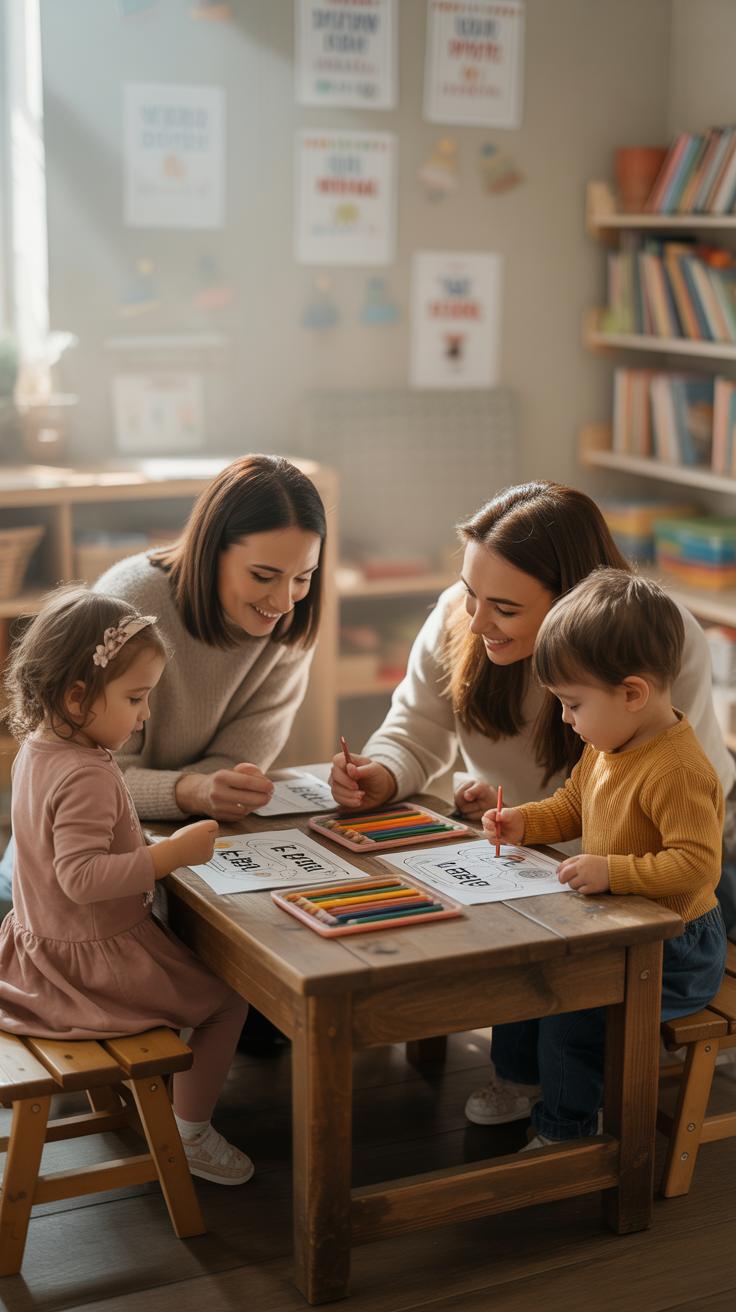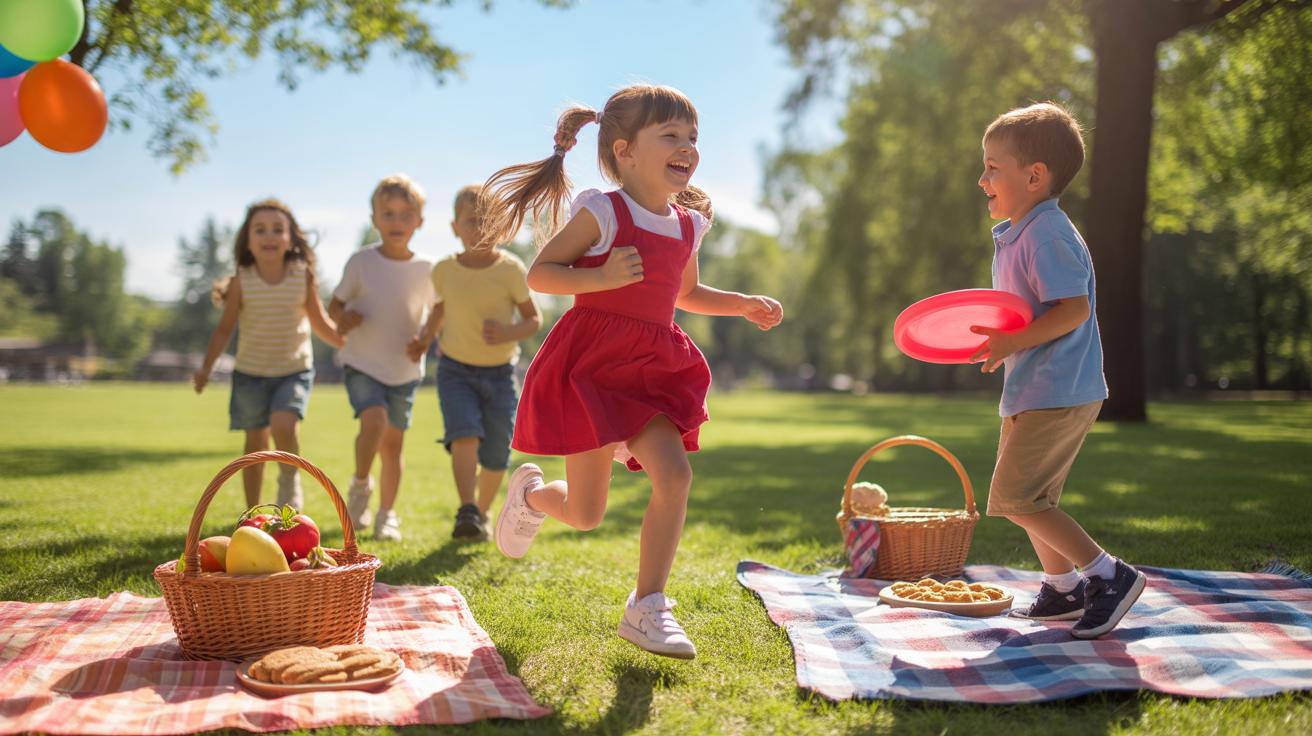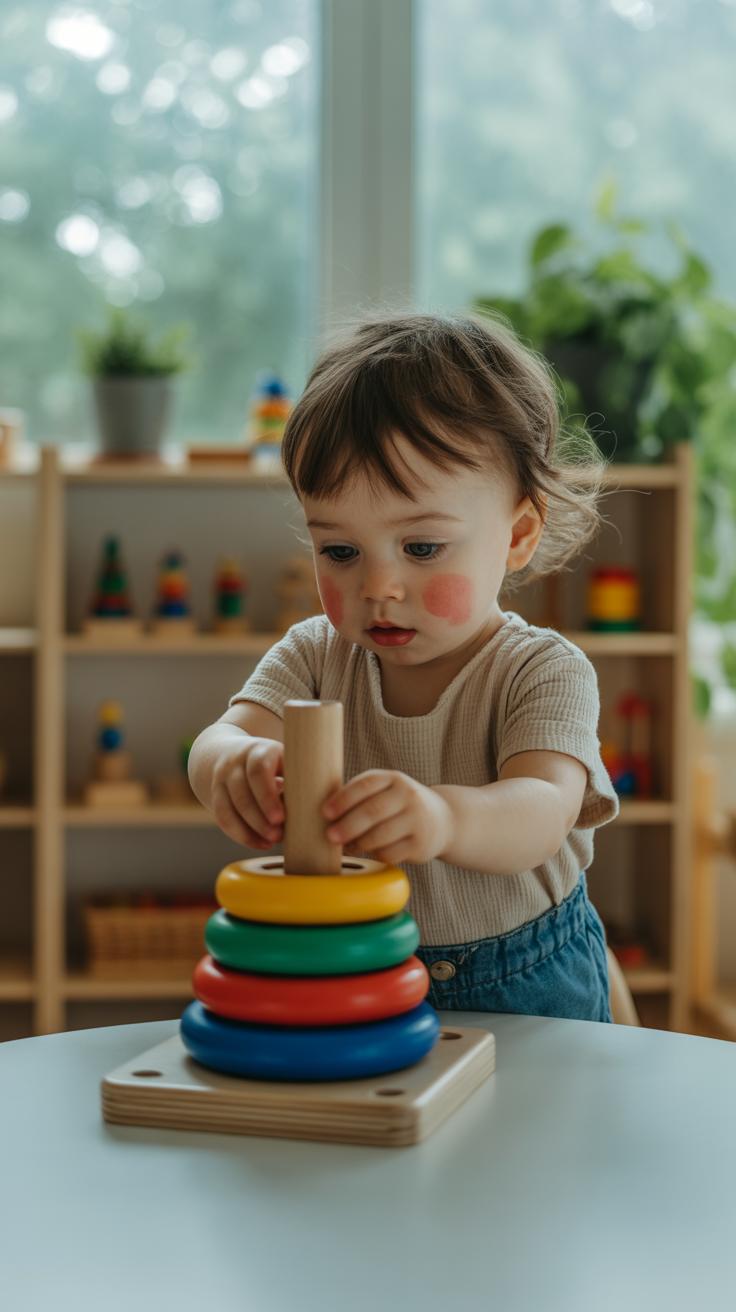Introduction
Kids learning activities that make education fun and interactive help children develop important skills while they enjoy themselves. Learning does not have to be boring. It can involve games, hands-on projects, and group activities that keep kids excited and eager to learn more.
In this article, you will discover how to make education an enjoyable experience for your child. We will explore different activities, the benefits of interactive learning, and tips for parents to support their child’s growth. By the end, you will have practical ideas to inspire your child’s learning journey.
Choosing The Right Learning Activities For Your Child
Finding learning activities that fit your child’s age and interests can feel a bit tricky. You want something that sparks their curiosity without being too hard or, well, too boring. Think about what your child enjoys—maybe they love building things, or they’re curious about animals. Starting there helps a lot.
Try to pick activities that match where your child is developmentally. For example, toddlers might not be ready for complex puzzles, but simple shape sorting or stacking blocks works well. Older kids might enjoy science experiments or storytelling games.
Sometimes, your child might surprise you by liking something new, so be open to trying different kinds of activities. Don’t worry if they don’t stick with something right away—kids often need several chances before they find their groove.
Ask yourself a few questions when choosing activities:
- Does this activity keep my child engaged without too much frustration?
- Will it encourage them to think or solve problems?
- Can it hold their interest for a good length of time?
Finally, remember that balance helps. Mix quiet, creative activities with movement or group play. This mix supports both their learning and their mood during the day. Watching how they respond will guide you more than any strict rule.
Matching Activities To Age And Skill Level
Young children, say toddlers and preschoolers, need simple, sensory-rich tasks. Like playing with blocks or finger painting. These activities develop fine motor skills and a sense of cause and effect. For elementary-aged kids, you can introduce more complex challenges—puzzles that require logic or simple science experiments. For example, building a weather chart together could be great for a seven-year-old. That said, sometimes a younger child surprises you and handles skills from “older” kids. So, trust your judgment, too.
Incorporating Your Child’s Interests
Children learn better when the activity connects to what they love. Is your child fascinated by animals? Try a matching game with animal pictures and facts. Into art? Incorporate drawing into learning letters or shapes. If they like tech, simple coding apps or interactive storybooks can fit well. Blending learning with interests keeps their attention longer. You might feel tempted to push a wide range of activities, but starting with what excites them often works better—at least for a while.
Creative Educational Games To Spark Curiosity
Simple Board And Card Games That Teach
Board and card games can be surprisingly powerful tools for learning. Whether it’s a quick round of “Uno” or the strategy behind “Set,” these games often boost skills like math, language, or critical thinking without feeling like work.
Take “Sum Swamp,” for example—a board game where kids practice addition and subtraction while moving around the board. It’s simple but effective for early math skills. Or consider “Scrabble Junior,” which encourages vocabulary-building and spelling through word creation. I’ve seen kids get genuinely invested in finding the best word they can.
Card games like “Spot It!” sharpen memory and observation, forcing players to quickly recognize patterns and details. And even something as classic as “Chess” introduces planning, foresight, and problem solving, though it might feel a bit advanced for younger kids.
These games keep learning hands-on and social, and that mix seems to stick better than reading a textbook, at least in my experience.
Using Apps And Digital Games Wisely
Digital games and apps offer endless variety, but not all educational ones hit the mark. The trick is picking games that actually promote interaction and thinking rather than just passive consumption.
Look for apps that challenge kids with puzzles or storytelling rather than those that reward endless tapping. Some apps, like “DragonBox,” cleverly teach algebra through gameplay without making it feel like a lesson, which is clever. Still, you might want to limit screen time and follow it with offline activities to balance things out.
It’s easy to be overwhelmed by choices. Ask yourself: Does the game engage problem-solving? Is it interactive? Does it adapt to your child’s pace? And importantly, does it keep things fun without turning into a screen marathon?
Selecting a few go-to apps and setting clear time limits can help keep digital learning positive rather than a source of frustration or distraction.
HandsOn Science And STEM Activities
STEM activities bring science, technology, engineering, and math right into a child’s world. These areas naturally feed curiosity, but they also build skills kids will use later, like problem-solving and critical thinking. Sometimes STEM can seem abstract or challenging, but hands-on projects make it more real and even fun. It’s one thing to read about how things work, but when kids build or experiment themselves, the learning sticks better.
Simple experiments like making a baking soda and vinegar volcano or growing sugar crystals can create “aha” moments. One easy project involves mixing cornstarch and water to make a substance that’s sometimes solid, sometimes liquid—messy but mesmerizing. These activities help kids see cause and effect firsthand.
Building projects are another way to introduce engineering basics. Using building kits or even cardboard and recycled bottles, children can create bridges or towers. This teaches them about balance, structure, and design without needing fancy tools. It also encourages creativity; sometimes, less conventional materials surprise you with what they can do.
Easy Science Experiments To Try At Home
Here are a few experiments you can do with common household items:
- Rainbow Jar: Layer different liquids like honey, dish soap, water, oil, and alcohol in a glass. Kids watch how they separate by density.
- Lemon Battery: Insert a penny and a galvanized nail into a lemon to generate a tiny electric current that can light a small LED.
- Floating Egg: See whether an egg floats in plain water or saltwater to explore density and buoyancy.
These are safe, quick, and easy to set up. You might be surprised at how long kids will stay engaged just by mixing things around.
Introducing Basic Engineering Through Building Projects
Building kits like blocks or magnetic tiles are obvious choices, but don’t overlook what you have in your recycling bin. Cardboard boxes, paper tubes, plastic bottles—they all can teach engineering concepts if you give them a chance.
Try challenges like building the tallest tower that can hold a small toy or constructing a bridge to span a gap between two chairs. Kids learn about weight distribution, stability, and structural design. And it’s not just about following instructions—often the best learning occurs when things don’t go as planned and kids figure out what to fix next.
Watching children experiment with these materials, I’ve noticed how they guess, test, and adjust their ideas. It’s not always neat, but it’s real learning. Plus, it’s rewarding in ways that worksheets rarely achieve.
Incorporating Sensory Play For Better Learning
What Is Sensory Play And Why It Matters
Sensory play means activities that let kids explore the world using their senses—touch, sight, sound, smell, and taste. It’s not just fun; it supports how the brain grows by connecting different parts and helping children understand their surroundings better.
For young children, sensory play builds skills like focus, coordination, and even language. When kids squish, listen, or smell, they’re discovering new things, which can make learning feel natural rather than forced. It’s tricky sometimes to explain why a messy activity helps, but I’ve seen it turn frustration into curiosity.
Ideas For Sensory Activities At Home
You probably have everything you need at home to start sensory play right now. Here are some simple ideas:
- Fill a bowl with dry pasta or rice and hide small toys inside for your child to find by touch—that surprise is often a hit.
- Make a “mystery bag” filled with different objects: a sponge, a feather, a smooth stone. What does each feel like?
- Create colored water with food dye and let kids mix colors using droppers or small cups.
- Use playdough or homemade dough—rolling, squishing, and shaping bring all kinds of tactile learning.
- Collect leaves, flowers, or herbs during a walk then let kids smell and sort them back at home.
- Try sound jars: fill empty containers with beans, rice, or buttons, seal them, and guess the contents by shaking.
There’s no need for fancy supplies. It’s about the experience and the way those small discoveries connect to bigger ideas later on. Sometimes, just watching a child’s face light up when they touch something unfamiliar reminds you how vital sensory play really is.
Using Art And Creativity In Learning
Art Activities That Help Children Express Themselves And Learn
Art lets kids show what’s going on inside their heads without needing words. When children draw or paint, they give shape to feelings and ideas that might be hard to say out loud. This kind of expression can make learning more personal and memorable. Sometimes, a scribble tells a story just as well as a sentence does.
Engaging in art also encourages them to think differently. When they mix colors or choose materials, they’re making decisions and solving small challenges. That’s creativity quietly supporting problem-solving skills. Not every art project has one ‘right’ way to do it, which pushes kids to find their own paths. This freedom helps develop critical thinking without it feeling like a test.
Art Projects That Teach And Inspire
Art doesn’t have to be separate from learning facts. It can teach shapes, colors, or patterns naturally. For example:
- Creating mosaics with colored paper can reinforce shape recognition and color sorting.
- Painting with primary colors encourages kids to see how colors blend and change.
- Making patterned greeting cards introduces rhythm and repetition, key ideas in math and music.
I’ve noticed that kids remember these lessons better when they’re part of a fun project rather than a worksheet. It’s less about memorizing rules and more about discovering concepts by doing.
Encouraging Creative Play To Build Confidence
When children engage in open-ended creative play, they learn to trust their ideas. It’s a space where there’s no ‘wrong’ answer, just exploration. This kind of play helps build confidence because kids realize they can create something uniquely theirs.
Giving children materials without strict instructions invites them to experiment and find joy in making choices. Sure, some days they might hesitate or doubt their decisions, but often this process leads to moments of pride and independence. I’ve seen many shy kids light up when their artwork is valued, even if it looks nothing like what an adult expects.
Involving Parents And Caregivers In Learning
Parents and caregivers often play a bigger role in children’s learning than they realize. Being involved doesn’t mean you need special training or tons of time. Even small moments—like asking about what your child learned at school or showing interest in their projects—can make a difference. Sometimes, it’s more about being present than teaching directly.
To encourage your child, try simple actions like:
- Reading a story together before bed, asking questions about the characters or plot.
- Going on nature walks and noticing different plants, animals, or sounds—turning it into a mini exploration.
- Playing games that build skills, such as card matching or word puzzles, joined by your enthusiasm rather than pressure.
Occasionally, you might feel unsure if you’re doing enough or somehow hindering progress. That’s normal. What matters is your interest and effort, which kids usually pick up on more than you think.
Simple Ways To Support Your Child’s Learning
It’s easy to overthink how to help children learn, but often the best support requires no heavy preparation. You can:
- Swap reading roles—sometimes you read, sometimes your child reads aloud, making it interactive and fun.
- Turn everyday errands into learning opportunities, like counting groceries or discussing money.
- Ask about their ideas on a topic instead of focusing on right or wrong answers—this makes learning feel natural.
These moments don’t demand a lot of time or resources. Often, parents wonder if reading a single page or chatting casually makes a difference. It does—more than you might expect.
Creating A Positive Learning Environment At Home
A home that invites learning doesn’t need to be perfect or overly organized. What matters is creating a space where your child feels curious and comfortable exploring.
Consider setting up a designated corner or shelf stocked with books, puzzles, and creative materials. Including objects from nature or simple science kits can spark interest without fuss. Keep the space accessible and flexible, so your child can choose what to explore and when.
Also, try to limit distractions like screens during active learning times. Encouraging a calm and relaxed atmosphere often helps kids focus better, though of course, every child reacts differently and some might need background noise or music to feel engaged.
Montessori And Other Educational Methods To Explore
What Makes Montessori Special
The Montessori method focuses a lot on letting kids take charge of their own learning, which seems to work well for many young learners. Children choose activities that interest them from a range of hands-on materials designed to teach specific concepts. This freedom to pick what they want encourages independence and helps build confidence.
One principle is respecting the child as an individual with unique rhythms and styles of learning. Instead of rigid lessons, kids learn by doing—whether it’s counting beads, pouring water, or sorting shapes—engaging their senses deeply. It’s not just about facts but developing concentration, coordination, and even social skills, though that part might feel less obvious at first.
Some notice how kids seem calmer and more focused in Montessori environments but also wonder if this approach suits every personality. I suspect it works best when the teacher steps back without disappearing completely.
Alternative Approaches To Learning
Beyond Montessori, there are other interactive methods that share a focus on learning by experience. For instance, Waldorf education emphasizes creativity and imagination through arts and storytelling. It encourages connection with nature and values rhythm and routine, which can be a welcome balance for some children.
Then, Reggio Emilia takes a somewhat similar hands-on approach but puts more emphasis on group projects and expressive arts as ways to build knowledge. It treats the environment as a “third teacher” and promotes collaboration among kids.
There’s also project-based learning, which you might find in some progressive schools, where kids tackle real problems or create things over weeks. This approach can spark genuine curiosity but sometimes feels less structured, which might be a challenge for some families.
Each method has pros and cons. What seems clear is that involving senses, choice, and active participation helps children engage more deeply. Maybe the best approach is mixing elements that match your child’s interests and temperament. Have you noticed which style your child responds to without being pushed?
Encouraging STEM Interest Through Role Models
Role models play a crucial part in shaping children’s views about STEM. When kids see women and diverse professionals succeeding in science, technology, engineering, or math, it conveys, almost without words, that they can do it too. It feels more relatable and less like some far-off dream. I’ve noticed that stories highlighting different backgrounds often resonate more deeply—kids seem more willing to imagine themselves in those roles.
Introducing real-life STEM heroes to children can be as simple as sharing books or casual conversations about people behind the inventions and discoveries. Try showing kids biographies or articles about scientists who made a difference, especially women or people from minority groups. This could open up those “why can’t I?” moments in a child’s mind.
There are also many videos and programs that strike the right balance between educational and fun. Shows like “Ask the StoryBots” or “SciGirls” put STEM in everyday terms for children, highlighting teamwork and creativity. You might want to explore safe online platforms offering short clips featuring STEM professionals or hands-on experiments. The key is to find content that doesn’t just tell but shows the human side of STEM—enthusiasm, challenges, and sometimes simple curiosity.
Tracking Progress And Celebrating Learning
Watching your child grow and learn can be surprisingly tricky to measure without the usual tests and grades. But tracking progress doesn’t have to feel like a chore or a chore-like system, especially if you approach it with a bit of creativity. Instead of formal assessments, you might try simple, informal methods that feel more like play than work.
Simple Tools To Monitor Learning
For example, you could keep a learning journal where your child draws or writes about what they’ve learned each day. This gives them a chance to express progress in their own way. Or try setting up a sticker chart linked to small, specific skills like tying shoelaces, counting to 20, or recognizing shapes. These tools don’t need to be fancy—sometimes a plain notebook or a whiteboard works just as well.
Observing your child during activities also reveals a lot—how they approach a puzzle or explain something new they’ve discovered. These moments are like hidden snapshots of development. Ever noticed how a child might suddenly use a new word or solve a problem differently? Those are signs that learning is happening.
Celebration Ideas To Motivate Your Child
Now, celebrating progress—this part can really change the game. Your kid feels seen when you highlight what they’ve achieved, even the small wins. You don’t need extravagant rewards; sometimes a special outing, a favorite meal, or reading an extra story at bedtime feels just right. Maybe even a “learning party” where the focus is simply sharing what they’ve learned with family or friends.
What about homemade certificates or badges that mark milestones? Or a treasure box filled with little surprises your child picks from after reaching goals? These celebrations don’t just acknowledge success, they encourage curiosity to keep growing. The real question might be, how will you celebrate the next discovery tomorrow?
Conclusions
You see, learning activities that are fun and interactive can turn education into a joyful adventure for your child. These activities not only build knowledge but also develop social, emotional, and cognitive skills needed for success. When children enjoy learning, they become curious and confident learners.
As you try the ideas shared here, remember that the best learning happens when you support your child’s interest and celebrate small wins. Keep activities varied and use real-life examples to make lessons meaningful. You hold the key to making education a positive experience for your child.

